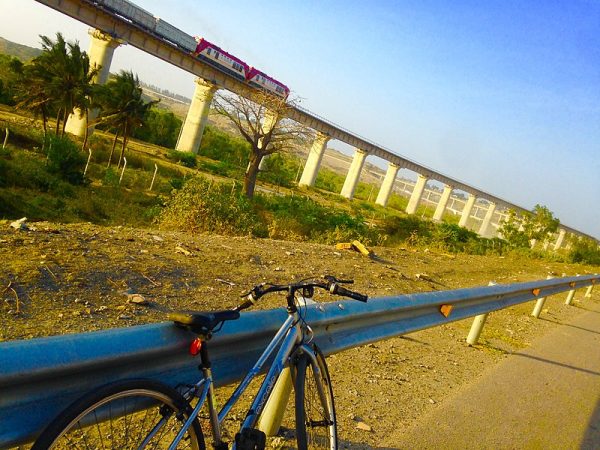
The Diplomat author Mercy Kuo regularly engages subject-matter experts, policy practitioners, and strategic thinkers across the globe for their diverse insights into U.S. Asia policy. This conversation with Jacinta Chen – a Downing-Pomona Scholar at the University of Cambridge and former program assistant at the Asia Society Policy Institute (ASPI) in New York City – is the 345th in “The Trans-Pacific View Insight Series.”
Explain the impetus behind ASPI’s “Navigating the Belt and Road Initiative Toolkit.”
This Toolkit builds on ASPI’s 2019 report “Navigating the Belt and Road Initiative” (BRI), which advanced 12 policy recommendations to address major challenges facing BRI projects. While primarily examining infrastructure projects in Southeast Asia, ASPI found that communication between Chinese project companies and affected people was often indirect, infrequent, one-sided or nonexistent, leaving local communities without recourse. The lack of comprehensive and transparent environmental and social impact assessments (ESIAs) further hampered Chinese developers’ and contractors’ abilities to anticipate and mitigate projects’ adverse impacts.
To help remedy these issues from the beginning of the project life cycle, ASPI developed a “Digital Toolkit” that shows those affected by or involved in BRI projects how to properly conduct stakeholder engagement and assess impacts on host country populations and the environment.
What does the Toolkit reveal about BRI host countries’ relations with China?
Since the establishment of BRI, host countries have increasingly looked to Chinese officials, banks and companies to invest in and build large-scale infrastructure projects.
From the Global Infrastructure Hub (GIHub) to the Asian Development Bank (ADB) and the White House, multi-trillion-dollar estimates abound for the global infrastructure-financing gap. While grants, loans, and technical assistance from established bilateral and multilateral organizations will partially fill this gap, host country governments are also welcoming Chinese promises to finance and deliver “green” and “high-quality” railways, power plants, highways, ports, and more.
Against the backdrop of high-level negotiations, ASPI heard from local communities experiencing the loss of clean water, food, housing, land, livelihood, and ancestral graves as a result of BRI projects. Although some projects are falling short of Chinese and international standards, sufficient solutions are not always available for affected people. The Toolkit equips local stakeholders with useful facts, strategies, and resources to uphold regulatory requirements and safeguard their own interests.
Examine the two critical aspects of development under BRI: stakeholder engagement and ESIAs.
ASPI observed recurring problems stemming from inadequate implementation of stakeholder engagement and ESIAs. Chinese contractors, developers and financiers rarely approached affected people and NGOs in and around project sites. Local stakeholders had difficulty naming – let alone contacting – the appropriate Chinese actors even when they were forcibly evicted from their homes or lost access to running water. During meetings with local intermediaries, impacted communities were pleased to hear about possible employment opportunities and compensation. But some of these offers never materialized.
ESIA processes tended to be opaque or incomplete. Affected people were largely unaware of projects’ downstream impacts because they had neither been consulted for the assessments nor provided copies to review. Local experts expressed concerns about the validity of ESIAs, particularly when proposed mitigation measures were not undertaken or monitoring results were not validated by independent agencies.
Identify the top three stakeholder expectations for BRI project financiers, developers, and contractors.
First, Chinese financiers, developers, and contractors should involve a wide range of stakeholders in the planning, implementation and operation of their projects. Drawing upon the expertise and perspectives of women, minorities, Indigenous peoples, NGOs, researchers, journalists, village leaders, and host country authorities can ultimately improve the quality of project designs, reduce risks and enhance benefits – especially for the most vulnerable and impacted people.
Second, Chinese companies, banks, and other relevant institutions should share accurate, complete, and truthful information with all stakeholders. Regularly disseminating project details in local languages – through letters, emails, websites, social media updates, news reports, and other modes – can build awareness of key proponents, deepen understanding of technical documents such as ESIAs, and allow affected households to make informed decisions about issues as consequential as resettlement and livelihood restoration.
Third, Chinese financiers, developers, and contractors should open up channels for collaboration with and redress for local stakeholders. Inviting affected people to serve on community coordination committees, work on projects or participate in environmental and social monitoring activities can increase Chinese accountability and local buy-in. The establishment of grievance mechanisms would provide additional means for addressing host country stakeholders’ questions and concerns, while minimizing the chance of social unrest.
In what ways can the BRI Toolkit be useful to policy, business and social impact communities?
National and subnational policymakers – in Beijing and BRI host countries – can compare their own laws, policies and guidelines with international best practices outlined in the Checklist, identify strengths and gaps in their written measures, and determine practical ways to bolster enforcement. Local policymakers can also use the Toolkit to keep track of important laws, policies and guidelines issued by the Chinese government, policy banks, commercial banks and state-owned enterprises (SOEs).
ASPI’s Toolkit encourages businesses to de-risk their projects through proper stakeholder engagement and ESIAs. It offers Chinese companies tailored recommendations and rationale for informing, consulting, and working with stakeholders across diverse linguistic, cultural, religious, political, and legal contexts. Businesses can even browse the directory of Stakeholders to connect with in-country experts in environmental and social issues.
Between the interactive Step-by-Step Timeline and the Glossary, the Toolkit serves as a reference guide for social impact organizations and affected communities to advocate for more equitable, inclusive, and sustainable BRI projects. It also amplifies the pioneering initiatives, handbooks and databases of numerous local and international NGOs to support transnational cooperation and learning.
A New Belt and Road Initiative Toolkit
Source: Frappler

0 Comments